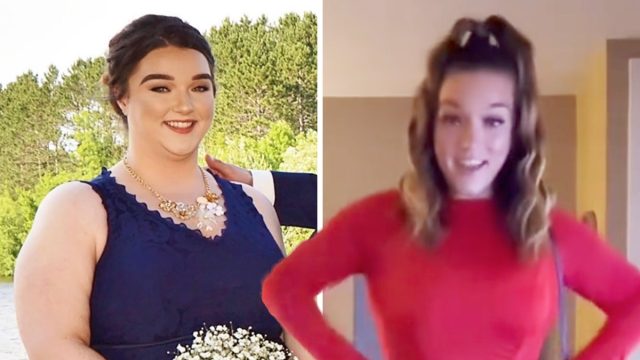I Lost My First 25 Pounds by Walking
Getting started on your weight loss journey can feel overwhelming, especially if you have a lot of weight to lose. Many people struggle with the concept of exercise. Whether intimidated to work out at the gym or simply not experienced enough in fitness to know where to start, it can be easy to overlook exercise. However, one weight loss warrior maintains that there is an easy and effective way to get started. Amber Clemens (@amber_c_fitness) is a fitness influencer who shares videos about how she lost a whopping 160 pounds and transformed her life. She recently shared a video about how she embarked on her fitness journey. "I lost 160 pounds and lost my first 25 just by walking and eating in a caloric deficit," she said in the TikTok clip, going on to explain the ways "walking is beneficial for weight loss." Body Network's Resident RDN, The Diet Diva, Tara Collingwood, MS, RDN, CSSD, LD/N, ACSM-CPT, a Board Certified Sports Dietitian, co-author of the Flat Belly Cookbook for Dummies, also chimes in on her reasoning.
It Increases Your NEAT

Walking "increases your NEAT – non-exercise activity thermogenesis," claims Amber. "All exercise will increase your metabolism and walking is no exception," Collingwood elaborates. "You will burn calories while you are walking but also increase your metabolism (NEAT) for a period of time after you are finished."
It's Low Impact

Walking is also "a low impact form of cardio that is good for your heart and knees," says Amber. Collingwood agrees. "Walking is something most people can do because it is low impact and doesn't require any jumping or spikes heart rate too much too quickly," she adds.
Related: This Plan Is How to Lose 5 Percent Body Fat In 2 Weeks
Can Help Improve Your Health

Walking "can help to lower your chances of heart disease, stroke, high blood pressure, certain cancers, and type 2 diabetes," Amber says. "Walking can decrease health risk from all of these diseases and more, especially if it also contributes to weight loss," explains Collingwood. "But even if you don't lose weight, just adding walking to your daily routine can work your heart, lungs, and muscles to reduce risk of disease."
Is "Easy" and "Accessible"

Walking is also "an easy, accessible form of movement for most people," Amber points out. "All you need is a pair of shoes," agrees Collingwood. "Make sure they are good shoes. Don't skimp on quality shoes if you want to prevent injury," she says.
RELATED: 10 Carbs to Help You Lose Weight
Can Help Reduce Stress

Finally, walking "can help reduce stress and cortisol levels," according to Amber. "All exercise can help with stress relief and may help with reducing cortisol levels by releasing other brain chemicals that are feel-good hormones that increase mood and make you feel better not just physically but emotionally as well, agrees Collingwood.
💪🔥Body Booster: Try walking for 30 minutes every day. Even if you don't walk 10,000 steps, walking daily will help you reap the many health benefits.
@amber_c_fitness How I lost my first 25 pounds. #weightloss #weightlosstips #walkingworkout #beginnerworkout #easyworkout #cardioworkout #weightlossmotivation ♬ walking on a dream by empire of the sun – sophie





